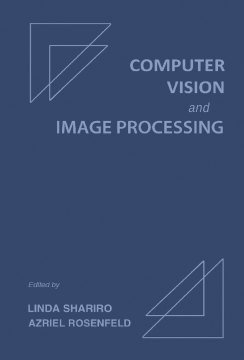
Additional Information
Book Details
Abstract
Computer Vision and Image Processing contains review papers from the Computer Vision, Graphics, and Image Processing volume covering a large variety of vision-related topics. Organized into five parts encompassing 26 chapters, the book covers topics on image-level operations and architectures; image representation and recognition; and three-dimensional imaging.
The introductory part of this book is concerned with the end-to-end performance of image gathering and processing for high-resolution edge detection. It proposes methods using mathematical morphology to provide a complete edge detection process that may be used with any slope approximating operator. This part also discusses the automatic control of low-level robot vision, presents an image partitioning method suited for parallel implementation, and describes invariant architectures for low-level vision. The subsequent two sections present significant topics on image representation and recognition. Topics covered include the use of the primitives chain code; the geometric properties of the generalized cone; efficient rendering and structural-statistical character recognition algorithms; multi-level thresholding for image segmentation; knowledge-based object recognition system; and shape decomposition method based on perceptual structure. The fourth part describes a rule-based expert system for recovering three-dimensional shape and orientation. A procedure of intensity-guided range sensing to gain insights on the concept of cooperative-and-iterative strategy is also presented in this part. The concluding part contains supplementary texts on texture segmentation using topographic labels and an improved algorithm for labeling connected components in a binary image. Additional algorithms for three-dimensional motion parameter determination and surface tracking in three-dimensional binary images are also provided.
